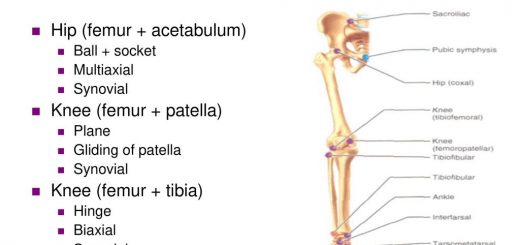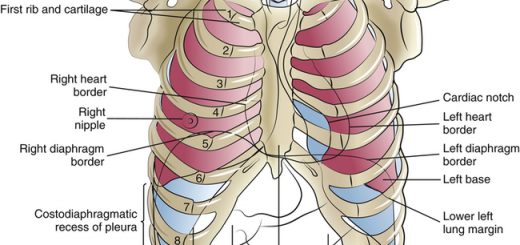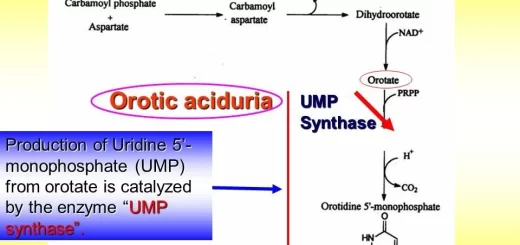Properties of nerves, Excitability and directions of conduction in the nerve impulse
A nerve fiber or axon is a long, slender projection of a nerve cell, or neuron, invertebrates, It conducts electrical impulses known as action potentials away from the nerve cell body. The axon can transmit information to different neurons, muscles, and glands. Nerve fibers are three types which are group A nerve fibers, group B nerve fibers, and group C nerve fibers.
Excitability changes in a nerve during activity
Excitability is the power of responding to a stimulus, and stimulus is a sudden change in the external or internal environment. stimuli may be electrical, chemical, mechanical, or thermal.
The effectiveness of a stimulus depends on:
- The rate of its application.
- Its strength.
- Its duration.
The rate of its application of the stimulus
The sudden application of a current of certain intensity is more effective than if it is gradually applied. Gradual application of the stimulus leads to accommodation or adaptation, which means that the excitable tissue has become used to the passage of the current.
The strength and the duration
These two factors are interdependent; their relation to the effectiveness of the stimulus is best illustrated by the strength-duration curve. In this curve, the strength of the current is plotted against the minimal time needed by that current to excite.
- Within limits, the stronger the current, the shorter is the time needed to excite the tissue.
- There is a minimal or threshold current intensity below which no excitation occurs, whatever the duration may be prolonged, this threshold current of unlimited duration is called the Rheobase (R).
- The time needed by the Rheobase to give a response is called the utilization time.
- There is a minimal time or duration (T), which is required for excitation below which no current whatever its strength can excite the tissue.
- These peculiarities of the strength-duration curve are common to all tissues.
- The only difference is in the magnitude of the current and the time needed.
- The more excitable is the tissue, the less are the intensities and the durations.
Use of strength-duration curve
It is used to compare between the excitability of different tissues and of the same tissue under different conditions. For simplification, comparisons are made by choosing one point on the curve, the duration of which is called chronaxie.
Chronaxie (Time Factor)
Chronaxie is the minimal time needed by double rheobasic strength to excite the tissue. The shorter the chronaxie, the greater is the excitability.
Factors affecting the excitability of the nerve fiber
Any factor which increases the permeability of the membrane in the nerve fiber to Na+ ions leads to an increase of its excitability and vice versa.
The concentration of ions in the extracellular fluid (ECF)
Ca++ concentration
- Low Ca++ ions concentration in ECF increases the excitability in the nerve by increasing the permeability of the membrane to Na+.
- The reverse occurs with high Ca++ ions level in ECF.
- The probable way in which Ca++ ions affect the Na+ channel is as follows:
- These ions appear to bind to the exterior surfaces of the Na+ channel protein molecule, then the positive charges of Ca++ ions alter the electrical state of the channel protein itself and in this way altering the voltage level required to open the sodium gate.
K+ concentration
- High K+ ion conc. in ECF increases the excitability of the nerve because it decreases the resting membrane potential as it prevents the outflux of further positive K+ ions, keeping them on the inner side of the membrane leading to decreased RMP.
- Conversely, low K+ ion conc. in ECF decrease the excitability of the nerves because it increases the RMP (hyperpolarization) because K+ ions diffuse from inside to outside the nerve fiber producing hyperpolarization.
Na+ concentration
- Increases in Na+ ions concentration in ECF facilitates the process of depolarization and increases the excitability of the nerve.
- The reverse happens with low Na+ ions concentration.
Chemical factors
Local anesthetics as procaine, novocaine decrease the permeability of the nerve fiber to Na+ ions, and in turn, decrease the excitability. Most local anesthetics act directly on the activation gates of the sodium channels, making them much more difficult to open and consequently reduces the excitability and the nerve impulse fails to be produced.
Nerve block
Nerve block means a failure of conduction of nerve impulse from one place to another, or loss of excitability of the nerve fiber i.e. there is no generation or propagation of nerve impulses.
Physical factors
- Thermal: Warming increases, while cooling decreases the excitability by decreasing the metabolic reaction needed for the Na+– K+ pump.
- Mechanical: deep pressure on the nerve fibers decreases the excitability.
Phases of excitability (Refractory periods)
Once a spike potential is propagated by a nerve, it is accompanied by changes in excitability. The conduction of nerve impulse alters the excitability of the fiber in the following order:
The absolute refractory period (ARP)
During this, the excitability is abolished, and no other stimulus whatever its strength may be, can excite the nerve fiber. This is because the membrane is in the depolarized state and it must be repolarized before it can respond to a second stimulus. The ARP coincides with the duration of the ascending limp of the spike and the upper third of the descending limp.
The relative refractory period (RRP)
During this period the excitability is being recovered, but still, below the normal level, a stronger stimulus is needed to excite the fiber during this period, and the impulse generated is of smaller magnitude and lower velocity. The RRP coincides with the remaining part of the descending limb of the spike.
Properties of the nerve
Conduction of nerve impulses is the only function of the nerve. Nerve fibers can be excited at any part along their length and can conduct impulses in both directions. Action potential does not decrease in strength with distance.
- Excitability (as mentioned before)
- Conductivity
- Adaptation
- Infatiguability
Conductivity
Conduction or propagation of an action potential on an excitable membrane excites the adjacent portion of the membrane.
Conductivity is of 2 types:
Conduction in unmyelinated nerves fibers
When an effective stimulus is applied to a certain point on the surface of a nerve fiber, the excited point develops increased permeability to Na+ ions leading to depolarization of this area of the membrane, and the nerve impulses is conducted along with the nerve fiber.
A local circuit of current flows between the depolarized areas of the membrane and the adjacent resting membrane areas. This process is repeated along the membrane and the action potential spreads in the form of local circuits causing more depolarization in both directions away from the stimulus until the entire membrane has become depolarized.
- The transmission of the depolarization process along the nerve fiber is called a nerve impulse.
- Repolarization spreads in the direction of depolarization and starts first at the point of original stimulation. The velocity of conduction is 0.5-3 m/sec.
The directions of conduction in the nerve impulse
If a nerve impulse is generated at any point of nerve fiber then it will spread in both directions; toward the cell body and toward the nerve terminal. The copy of the impulse that spreads to the cell body will be aborted; it will die off and will not be transmitted through that cell body to another neuron as the cell body does not release any chemical transmitter. The copy of the nerve that reaches the nerve terminal will be transmitted to the next neuron as the nerve terminal releases the chemical transmitter.
- Impulses that are conducted in the direction of the nerve terminal are called orthodromic impulses as they are conducted in the normal pathway of nerve impulses (anterograde transport).
- Impulses that are conducted in the direction of the cell body are called antidromic impulses as they are conducted against the normal pathway of nerve impulses (retrograde transport).
- Thus, synapses act as one-way valves that help the passage of orthodromic but block those of antidromic direction. Nerve conduction in the human being occurs in one direction
Conduction in myelinated nerve fibers (saltatory conduction)
The myelin sheath is highly insulator to the passage of electric current and ions. The nodes of Ranvier are characterized by:
- They are the most excitable regions of the nerve fiber due to the absence of myelin sheath.
- They are the sites where the migration of ions necessary for the conduction of nerve impulses takes place.
- They are the areas from which the impulses start when the myelinated nerve is excited.
The distance between the nodes is short enough that local current can flow between an active node and an adjacent inactive node before dying off. when an action potential occurs at one node, local current flow between this node and the oppositely charged adjacent node reduces the adjacent node’s potential to the threshold so that it undergoes sn action potential and so on. Consequently, in myelinated fibers, the impulse ”jumps” from node to node skipping over the myelinated sections of the axon.
Saltatory Conduction = jumping of depolarization from one node to another node.
Importance of saltatory conduction
- It increases the velocity of conduction along the nerve fiber by the process of jumping. The velocity of conduction is 3-120 m/sec.
- Depolarization is limited to the nodes of Ranvier and so leakage of Na+ ions is minimum to the inside of the fiber. This saves the energy required by the sodium pump to extrude sodium ions to the outside.
Changes occurring in a nerve during activity, compound action potential vs Action potential
Excitable Tissues & factors involved in production of RMP (Resting membrane potential)
Peripheral nerve (Nerve trunk) types, structure, function & Response of neurons to injury
Nervous tissues function, structure, types of Neurons & Nervous fibers



